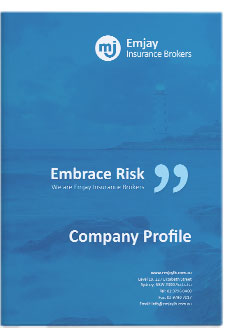Our world is changing faster than ever before. And these changes are across the board – new technologies, new business practices and new ways of thinking. SME business owners need to keep up or be faced with the prospect of having to catch up.
As an SME business owner, you’re faced with the tough task of meeting the challenge of change. What external changes have the potential to impact your business? There are so many unknowns. What we do know however is that the successful SME business owners lead the charge for change, using it to their advantage by embracing it and continuing to grow and learn.
What’s your risk management plan?
But with change comes risk. Risk management is often seen as one of the boring aspects of running a business. That is, until things go wrong!
It’s a common misconception that only large businesses need to have a risk management plan in place. This couldn’t be further from the truth. Smaller businesses can be less resilient than larger companies, so smart SMEs have a risk management plan. The even smarter ones also have risk mitigation strategies and solutions in place.
So what do you need to consider when it comes to risk? Here’s some steps:
- Identify your risks. Spend some time identifying your key risks. Your business may carry risk in relation to the use of equipment and materials in the workplace. Or perhaps your risk is primarily in the area of personnel; for example, what happens if a key employee leaves? Whether big or small, identifying as many potential risks as possible is the foundation of a good risk management plan.
- Do a risk assessment. Work out how likely it is that the identified risks will occur and how serious their potential impact will be. Assess which risks pose the most serious threat, as these are the ones you should prioritise in terms of mitigation.
- Work out how to mitigate risks. What steps can you take to eliminate the risks or, at the very least, minimise them? In some instances, you’ll be able insure against the risk and this is great protection for your business. But in some cases you won’t, so mitigating as much of the risk as possible is essential. Perhaps that means providing your employees with improved safety equipment. Or maybe cross training them will reduce the impact of someone moving on.
- Conduct regular reviews. Once your risk management plan is in place, make sure you review it on a regular basis. Change is constant, so your plan will inevitably need to change over time.
Don’t forget that some things will always be out of your control. Unfortunately, sometimes disaster strikes. Think about the possibility of floods, cyclones, hailstorms, bushfires. These can wreak havoc, so you need to be prepared. Man-made incidents such as vandalism and cyber attacks can be equally as damaging. When disaster strikes it’s essential to have safeguards in place to ensure your business can deal with the impact. So make sure you have a disaster recovery strategy in place, as well as business continuity insurance.
Developing an effective risk management plan can be a complicated task, so you should always seek advice from an expert. They’ll be able to guide you through the process.
Emjay Insurance Brokers provides risk management management advice and solutions to SMEs of all sizes. They make it easy for you to access the advice and services you need to ensure your business is protected. Contact us today to discuss your needs on (02) 9796 0400.





